What Everybody Ought To Know About Prediabetes
Summary: More than 1 in 3 American adults has prediabetes, and 90% of them don’t know it. The disease remains largely undetected. Because people aren’t getting treatment, the condition kills 50% more people than its big sister, diabetes. This article provides a free online tool to assess your risk. Prediabetes treatment helps to prevent type 2 diabetes and adds years to your life.
Most of us are aware that diabetes is a major public health concern. What these same people don’t realize is that prediabetes, also called borderline diabetes, is far more prevalent. Prediabetes typically precedes full-blown type 2 diabetes.
Because most people don’t know they have the condition, they aren’t getting proper prediabetes treatment and are missing an opportunity to prevent full-blown type 2 diabetes. Because the disease is largely undetected and untreated, the World Health Organization (WHO) estimates that prediabetes is responsible for 50% more deaths than type 2 diabetes itself. The earlier the disease is diagnosed, the sooner prediabetes treatment can begin and prevent the progression to full-blown diabetes.
Article In A Nutshell
- One in three adults has prediabetes. Because 90% of them are unaware they have the disease, they are missing out on treatment.
- Prediabetes increases the risk of full-blown diabetes.
- Treatment helps to prevent type 2 diabetes and adds years to a prediabetic’s life.
- If you are at high-risk, get screened for prediabetes.
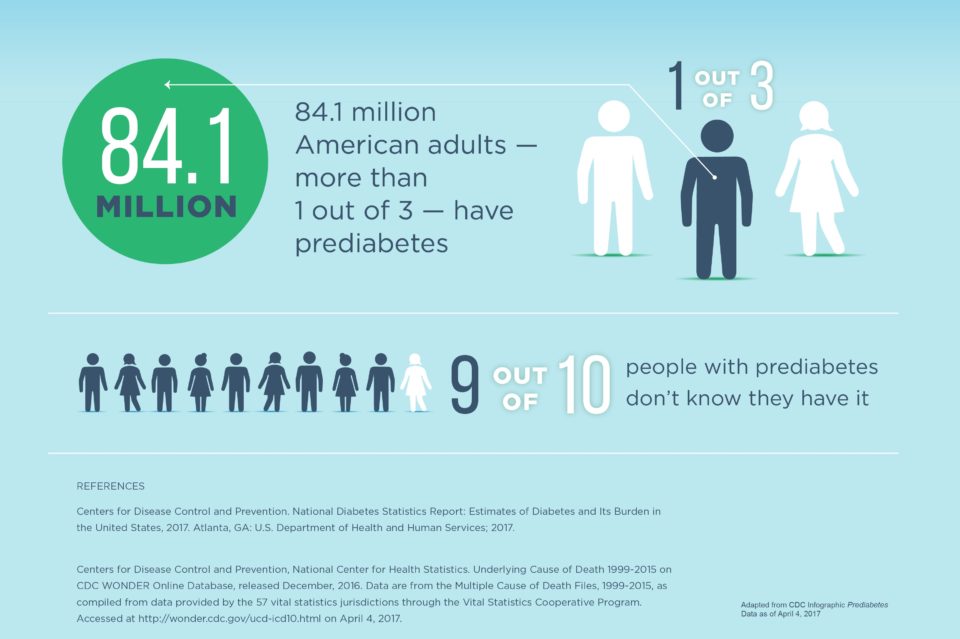
1 in 3 Adults Has Prediabetes – 90% Don’t Know It
Here’s an astonishing statistic: one in three adults has prediabetes, according to the latest report from the U.S. Centers for Disease Control and Prevention (CDC). Amazingly, 90% of them don’t know they have the disease.
People with undiagnosed and untreated prediabetes, are at increased risk of heart attack, stroke, and early death. Risks they could avoid by early detection and proper treatment. Prediabetes treatment options include lifestyle changes and inexpensive tablets.
Proactive prediabetes treatment can add years to your life and prevent the onset of deadly diabetes.
What Is Prediabetes?
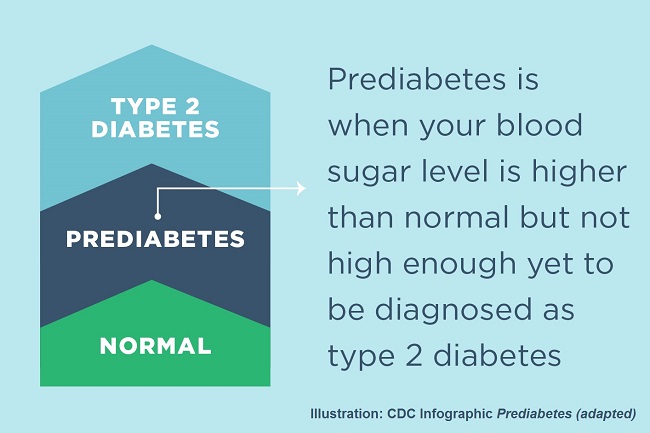
Before getting full-blown diabetes, many people develop prediabetes, a condition in which blood-sugar levels are higher than normal, but not high enough to be considered diabetes. Without treatment, prediabetics are at much greater risk of developing full-blown diabetes.
Who’s At Risk For Prediabetes?
The largest risk factors for prediabetes are age and being overweight/obese. The risk of prediabetes increases with age. As well, the higher your body mass index (BMI), the greater your risk. According to the CDC, the following factors increase a person’s risk for developing prediabetes and type 2 diabetes.
CDC Prediabetes Risk Factors:
- Being 45 years of age or older.
- Being overweight.
- Being treated for high blood pressure.
- African Americans, Hispanic/Latino Americans, American Indians, Pacific Islanders, and some Asian Americans have a higher risk.
- Having a parent or sibling who has type 2 diabetes.
- Being physically active fewer than three times per week.
- Having ever had diabetes while pregnant (called gestational diabetes).
- Having ever given birth to a baby that weighed more than 9 pounds.

Image: Grand Central Station. Photo: Pixabay.
What Are The Symptoms of Prediabetes?
Prediabetes usually has no symptoms, and this is the reason why 9 out of 10 people with this condition do not know they have it. The visible symptoms of prediabetes are barely detectable – most people don’t notice a thing. People discover that they have prediabetes only with a blood test. Prediabetes remains largely undetected because blood sugar testing isn’t a routine lab test.
Prediabetes Deadlier Than Diabetes
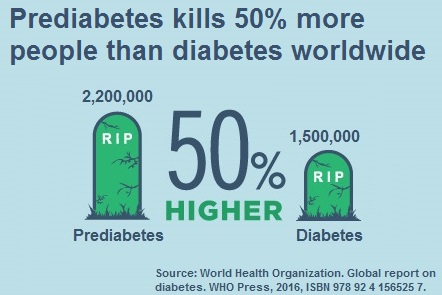
Prediabetes kills 50% more people than diabetes worldwide, according to a 2016 report from the World Health Organization.
The global organization estimated that worldwide in 2012, diabetes caused 1.5 million deaths, with an additional 2.2 million deaths resulting from the complications of high blood sugar, such as kidney failure, heart attack, and stroke. The WHO defines prediabetes as the condition in which “blood glucose is abnormally high, but not high enough to be considered diabetes.” According to the authors of the 2016 WHO report:
“Diabetes caused 1.5 million deaths in 2012,” adding “higher-than-optimal blood glucose [prediabetes] caused an additional 2.2 million deaths, by increasing the risks of cardiovascular and other diseases.”
Why Is Prediabetes Dangerous?
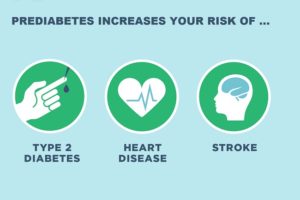
Prediabetes comes with most of the same types of health risks as diabetes, such as stroke and heart disease. Without treatment, prediabetes harms one’s health.
While the health risks of untreated prediabetes aren’t as severe as those of diabetes; when left untreated, the condition causes far more deaths, because the disease is largely undetected.
Prediabetes Leads To Diabetes
Without treatment, prediabetes significantly increases the odds of developing full-blown type 2 diabetes, a disease that takes six years off a person’s life, doubling the risk of fatal heart attack and stroke.
Here are two shocking statistics. First, between 15-30 percent of untreated prediabetics develop type 2 diabetes within five years. Second, about 40% of Americans alive today will develop type 2 diabetes.
How is Prediabetes Diagnosed?

Doctors recommend screening for prediabetes beginning at age 45, but sometimes sooner if you have other risk factors, especially being overweight.
Doctors use the same simple blood tests when screening for both diabetes and prediabetes. The tests most commonly used are the A1C (Glycohemoglobin) test, the Fasting Blood Sugar (FBS) test and sometimes the Oral Glucose Tolerance Test (OGTT).
The tests most commonly used are the A1C (Glycohemoglobin) test, the Fasting Blood Sugar (FBS) test and sometimes the Oral Glucose Tolerance Test (OGTT).
Only a physician can make the diagnosis. Because knowing your results is the first step to maintaining your health, visit your doctor and get your blood sugar tested.
Online Prediabetes Risk Assessment
A simple online app can assess your risk for prediabetes. The app is jointly sponsored by the American Medical Association, the ADA, the Ad Council and the Centers for Disease Control. The app has seven questions and takes about one minute to complete. Access the online app at this link.
Take Home Message
More than one in three American adults are walking around prediabetes, and 90% of them don’t know it. Untreated, prediabetes is a risk factor for diabetes and is unhealthy on its own, killing 50% more people than diabetes. Because the condition is largely untreated, prediabetes is one of America’s leading silent killers.
If you are at high-risk, it pays to visit your doctor and get tested for prediabetes.
Prediabetes Treatment Companion Article
If you are diagnosed as prediabetic, please read our companion article on prediabetes treatment options. Prediabetes treatment is inexpensive and prevents the disease from stealing years of your life.
Prediabetes Treatment Resources
Centers for Disease Control and Prevention (CDC). About Prediabetes & Type 2 Diabetes.
The National Institute of Diabetes and Digestive and Kidney Diseases (NIDDK). Diabetes Prevention Program (DPP).
Show Us Some Love
- One click helps us spread the word – Share this post on your social media account and help your friends. It only takes one click on any of the social media links on this page.
- Follow us on social media – For more articles weekly, follow us on Google+ | Facebook | Reddit
- Tell us what you think – We love comments. Scroll down and leave your comments below.
Article References / Sources
World Health Organization. Global report on diabetes. WHO Press, 2016, ISBN 978 92 4 156525 7. Available Online.
Centers for Disease Control and Prevention. About Prediabetes & Type 2 Diabetes. Online Report. Only Available Online.
Yuli Huang, Xiaoyan Cai, Weiyi Mai, Meijun Li, Yunzhao Hu. Association between prediabetes and risk of cardiovascular disease and all cause mortality: systematic review and meta-analysis; BMJ 2016 (23 November 2016); 355 doi: https://doi.org/10.1136/bmj.i5953, (BMJ 2016;355:i5953). Available Online.
Adam G Tabák, MD, Christian Herder, Ph.D., Wolfgang Rathmann, MD, Eric J Brunner, Ph.D., Prof Mika Kivimäki, Ph.D. Prediabetes: A high-risk state for developing diabetes. 2012. The Lancet, Volume 379, Issue 9833, 2279-2290. Available Online.
Disclaimer
Diagnosis, Advice, and Treatment: This article is intended for informational and educational purposes only and is not a substitute for professional medical advice. The information provided in this article should not be used during any medical emergency or for the diagnosis or treatment of any medical condition. A licensed physician should be consulted for the diagnosis and treatment of any and all medical conditions. Call 911, or the equivalent emergency hotline number, for all medical emergencies. As well, consult a licensed physician before changing your diet, supplement or exercise programs. Photos, External Links & Endorsements: This article is not intended to endorse companies, organizations or products. Links to external websites, depiction/mention of company names or brands, are intended only for illustration and do not constitute endorsements.
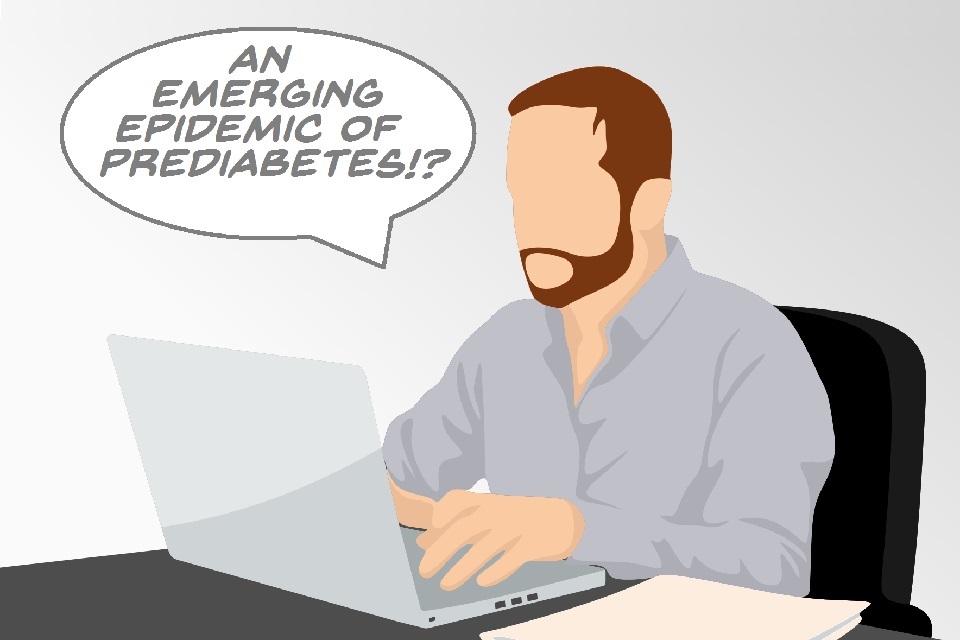
There is a problem with your widgets – very annoying.
However – over all.. nice article .. well written
thanks for posting this